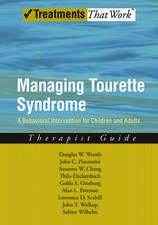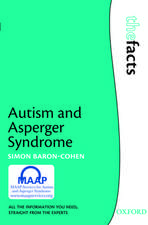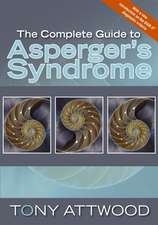The Neuronal Environment: Brain Homeostasis in Health and Disease: Contemporary Neuroscience
Editat de Wolfgang Walzen Limba Engleză Hardback – 26 dec 2001
| Toate formatele și edițiile | Preț | Express |
|---|---|---|
| Paperback (1) | 1230.03 lei 43-57 zile | |
| Humana Press Inc. – 19 noi 2010 | 1230.03 lei 43-57 zile | |
| Hardback (1) | 1240.47 lei 43-57 zile | |
| Humana Press Inc. – 26 dec 2001 | 1240.47 lei 43-57 zile |
Din seria Contemporary Neuroscience
- 5%
 Preț: 1128.63 lei
Preț: 1128.63 lei - 18%
 Preț: 965.52 lei
Preț: 965.52 lei - 5%
 Preț: 1108.35 lei
Preț: 1108.35 lei - 18%
 Preț: 1228.15 lei
Preț: 1228.15 lei - 18%
 Preț: 1229.73 lei
Preț: 1229.73 lei - 18%
 Preț: 1231.64 lei
Preț: 1231.64 lei - 18%
 Preț: 945.47 lei
Preț: 945.47 lei - 18%
 Preț: 1244.08 lei
Preț: 1244.08 lei - 15%
 Preț: 638.76 lei
Preț: 638.76 lei - 18%
 Preț: 1385.99 lei
Preț: 1385.99 lei - 18%
 Preț: 1227.84 lei
Preț: 1227.84 lei - 18%
 Preț: 1220.88 lei
Preț: 1220.88 lei - 18%
 Preț: 961.55 lei
Preț: 961.55 lei - 15%
 Preț: 695.70 lei
Preț: 695.70 lei - 18%
 Preț: 959.82 lei
Preț: 959.82 lei - 5%
 Preț: 1112.17 lei
Preț: 1112.17 lei - 18%
 Preț: 1233.83 lei
Preț: 1233.83 lei - 18%
 Preț: 950.96 lei
Preț: 950.96 lei - 24%
 Preț: 799.49 lei
Preț: 799.49 lei - 18%
 Preț: 954.77 lei
Preț: 954.77 lei - 18%
 Preț: 1227.21 lei
Preț: 1227.21 lei - 5%
 Preț: 1117.46 lei
Preț: 1117.46 lei - 18%
 Preț: 1248.02 lei
Preț: 1248.02 lei - 18%
 Preț: 949.10 lei
Preț: 949.10 lei - 5%
 Preț: 1114.35 lei
Preț: 1114.35 lei - 15%
 Preț: 694.22 lei
Preț: 694.22 lei - 18%
 Preț: 950.52 lei
Preț: 950.52 lei - 5%
 Preț: 1124.07 lei
Preț: 1124.07 lei - 5%
 Preț: 1117.10 lei
Preț: 1117.10 lei - 24%
 Preț: 1089.43 lei
Preț: 1089.43 lei - 18%
 Preț: 1227.52 lei
Preț: 1227.52 lei - 18%
 Preț: 955.08 lei
Preț: 955.08 lei - 5%
 Preț: 1417.38 lei
Preț: 1417.38 lei
Preț: 1240.47 lei
Preț vechi: 1512.77 lei
-18% Nou
Puncte Express: 1861
Preț estimativ în valută:
237.37€ • 248.45$ • 197.56£
237.37€ • 248.45$ • 197.56£
Carte tipărită la comandă
Livrare economică 31 martie-14 aprilie
Preluare comenzi: 021 569.72.76
Specificații
ISBN-13: 9780896038820
ISBN-10: 0896038823
Pagini: 432
Ilustrații: X, 432 p.
Dimensiuni: 178 x 254 x 27 mm
Greutate: 1.1 kg
Ediția:2002
Editura: Humana Press Inc.
Colecția Humana
Seria Contemporary Neuroscience
Locul publicării:Totowa, NJ, United States
ISBN-10: 0896038823
Pagini: 432
Ilustrații: X, 432 p.
Dimensiuni: 178 x 254 x 27 mm
Greutate: 1.1 kg
Ediția:2002
Editura: Humana Press Inc.
Colecția Humana
Seria Contemporary Neuroscience
Locul publicării:Totowa, NJ, United States
Public țintă
Professional/practitionerCuprins
I. Neuronal Activity and its Dependence on the Microenvironment.- 1 Central Nervous System Microenvironment and Neuronal Excitability.- 2 Neuronal Energy Requirements.- II. Brain Microenvironment.- 3 Plasticity of the Extracellular Space.- 4 Transmitter—Receptor Mismatches in Central Dopamine, Serotonin, and Neuropeptide Systems: Further Evidence for Volume Transmission.- 5 The Extracellular Matrix in Neural Development, Plasticity, and Regeneration.- 6 Homeostatic Properties of Astrocytes.- 7 Glutamate—Mediated Astrocyte—Neuron Communication in Brain Physiology and Pathology.- 8 Axonal Conduction and Myelin.- 9 Coupling of Blood Flow to Neuronal Excitability.- III. Brain Macroenvironment.- 10 Choroid Plexus and the Cerebrospinal—Interstitial Fluid System.- 11 The Blood-Brain Barrier.- 12 Circumventricular Organs.- 13 Glial Linings of the Brain.- IV. Immune System-Neuron Interactions.- 14 Microglia in the CNS.- 15 Invasion of Ischemic Brain by Immune Cells.
Recenzii
"This book is a timely collection of reviews of fundamental processes in the compartments and chemical components of the cerebral micro-environments...its contents prove rewarding reading for the neuroclinician." - Clinical Neurology and Neurosurgery
"The book targets researchers, graduate students, and educators who face constant challenges on how to modify the external environment of a specific neuron in order to obtain specific behavioral results. The author is a credible authority on the subject but I think the scope of the book has an audience beyond that proposed by the author. Neurology and neurosurgery residents would also find it useful to read this book in order to better understand the mechanisms of control of the central nervous system...This is a good contribution to the field of neuroscience. Besides the initial aim signaled by the authors, I would extend the list of readers to neurology and neurosurgery residents, who are daily questioned on the genetic-physiologic correlation of diseases dealt with on a daily basis." -Doody's Health Sciences Book Review Journal
"...not just a textbook on neuroscience, as readers might imagine from the book title, but rather an essential guide for experts, beginners and students in the field of cell biology and pharmacology...written by experts who have made major contributions in their field..." - Journal of Chemical Neuroanatomy
"...this volume is not just a textbook on neuroscience, as readers might imagine from the book title, but rather an essential guide for exerts, beginners and students in the field of cell biology and pharmacology...written by experts who have made major contributions in their field..." - Journal of Chemical Neuroanatomy
"Once one begins to read in greater depth, it becomes clear that this volume is not just a textbook on neuroscience, as readers might imagine from the book title, but rather an essential guide for experts, beginners and students in the field of cell biology and pharmacology...written by experts who have made major contributions in their field...this book, besides being an excellent learning tool, is to enjoy." -Elsevier
"The book targets researchers, graduate students, and educators who face constant challenges on how to modify the external environment of a specific neuron in order to obtain specific behavioral results. The author is a credible authority on the subject but I think the scope of the book has an audience beyond that proposed by the author. Neurology and neurosurgery residents would also find it useful to read this book in order to better understand the mechanisms of control of the central nervous system...This is a good contribution to the field of neuroscience. Besides the initial aim signaled by the authors, I would extend the list of readers to neurology and neurosurgery residents, who are daily questioned on the genetic-physiologic correlation of diseases dealt with on a daily basis." -Doody's Health Sciences Book Review Journal
"...not just a textbook on neuroscience, as readers might imagine from the book title, but rather an essential guide for experts, beginners and students in the field of cell biology and pharmacology...written by experts who have made major contributions in their field..." - Journal of Chemical Neuroanatomy
"...this volume is not just a textbook on neuroscience, as readers might imagine from the book title, but rather an essential guide for exerts, beginners and students in the field of cell biology and pharmacology...written by experts who have made major contributions in their field..." - Journal of Chemical Neuroanatomy
"Once one begins to read in greater depth, it becomes clear that this volume is not just a textbook on neuroscience, as readers might imagine from the book title, but rather an essential guide for experts, beginners and students in the field of cell biology and pharmacology...written by experts who have made major contributions in their field...this book, besides being an excellent learning tool, is to enjoy." -Elsevier
Textul de pe ultima copertă
To function properly, neurons must interact with other constituent elements of the brain (e.g., blood supply and myelin), and in fact most diseases of the nervous system involve these nonneuronal components. In The Neuronal Environment: Brain Homeostasis in Health and Disease, leading neuroscience researchers offer a fresh perspective on neuronal function by examining all its many components-including their pertubation during major disease states-and relate each element to neuronal demands. Topics range from the dependency of neurons on metabolic supply, ion homeostasis, and transmitter homeostasis, to their close interaction with the myelin sheath. Also addressed are the astrocytic signaling system, which controls synaptic transmission, the extracellular matrix and space as communication systems, the role of blood flow regulation in blood-brain barrier function, and inflammation and the neuroimmune system. All these elements are treated in the context of their importance for neurons and the major diseases affecting them.
Insightful and integrative, The Neuronal Environment: Brain Homeostasis in Health and Disease demonstrates for today's neuroscientists, cell biologists, and pharmacologists a clear new understanding that neurons do not work in isolation, that they need constant interactions with other brain components to process information, and that they are not the brain's sole information processing system.
Insightful and integrative, The Neuronal Environment: Brain Homeostasis in Health and Disease demonstrates for today's neuroscientists, cell biologists, and pharmacologists a clear new understanding that neurons do not work in isolation, that they need constant interactions with other brain components to process information, and that they are not the brain's sole information processing system.
Caracteristici
Includes supplementary material: sn.pub/extras













